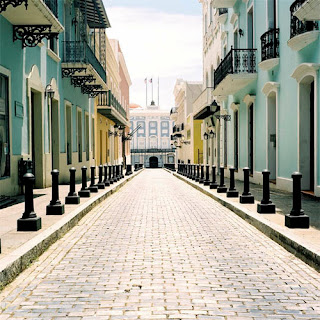A CURIOUS HISTORY, A PECULIAR PASSION
The idea of a curiosity cabinet began somewhere around the 16th century. I always thought the cabinet was a euphemism for the concept of displaying collections of oddities but the cabinet actually was a cabinet. It was usually made of wood with a series of drawers or shelves placed behind glass doors. The contents of these cabinets were the sideshow collections of the wealthy with a penchant for objects outside the normal sphere of every day life. These wealthy collectors showcased their private collections in their homes, periodically opening their doors to other members of the privileged class for a glimpse of a three headed baby goat, a rare grouping of precious gems, or Cleopatra's toenail clippings. Eventually it became prestigious to donate these collections to newly immerging public institutions. This was the beginning of our global network of public museums, places where the general public could come and see phenomenon never before available for their edification or amusement. Now it seems the curiosity cabinet or at least the collecting of the unusual, priceless, or the-not-in-my-house are making a comeback and I'm enjoying their return.
I remember the first time I took Emmy to Deyrolle, a curiosity shop that stretches the imagination even for the left Bank in Paris. Emmy has always had a soft spot for animals, all animals. She was six years old that summer in Paris, still small enough that I could carry her on my shoulders. We walked from our hotel to the metro and then to 46 rue du Bac the address for Deyrolle.
The façade is sweetly human sized but belies the enormity of the second floor shop. Walking up the creaky stairs there's a feeling of having been transported back to the 16th century where a private collector has housed his curiosity collection in a series of rooms too small to contain his passion.
Taxidermied polar bears and lions stand on cabinets along side exotic birds and forest animals. Cabinets house rare minerals and insects stabbed with pins. Emmy was fascinated and scared simultaneously. There was a glassy eyed mystification consuming her curiosity and leaving her, for the moment, speechless.
Joanna Ebenstein has made a career out of photographing the world of curiosities. She has searched the cobbled streets of London and the fifth floor walk-ups of the lower east side of New York chronicling the contemporary private collectors of taxidermied animals, medical anomalies, religious artifacts and really weird stuff. You can find her photographs through her exhibit Private Cabinets Photo Series.
She not only documents the collections of others but has created her own curiosity habitat that she calls The Morbid Anatomy Library. There's a strange eerie beauty that Joanna has uncovered in her photos. The macabre turns to art in her hands.
If museums hadn't come to pass, movie stars and the social elite would be trading their celebrity to garner tickets to view the home of Tim Knox and Todd Longstaffe-Gowan in a doggy area in London's East End. Portraits of Sir Arthur Hopton and his brother Sir Thomas Hopton by Van Dyck adorn one wall while an elephant skull sits on a table among various religious artifacts mostly depicting nuns.
The mix of art and curiosities is exactly what museums had in mind. It stirs the pot of imagination and inquisitiveness making viewers want to know, "What the heck?"
As if the west coast wasn't kooky enough David Wilson's Museum of Jurassic Technology in Culver City is out to raise the bar of California lunacy one notch higher.
Lawrence Weschler in his book, Mr. Wilson's Cabinet of Wonder: Pronged Ants, Horned Humans, Mice on Toast and Other marvels of Juraassic Technology, catalogues all of the items and then many more that appear in this store front museum.
I'm a sucker for shelling out money I don't have for things like string balls, 19th century medical charts and weekend painter's renditions of the surreal world. I have to draw the line on stuffed vermin but I get the appeal. I tend to look for my wacky and mystical treasures at flea markets, antique fairs, and estate sales but there are dealers all over the world that are willing to sell you human skulls, bleeding heart Madonnas or the tombstones of flesh eating serial killers (this last one we actually saw on a road trip through southeastern Wisconsin - as tempting as it was we passed it up). Here are a couple of places that deal in items worthy of inclusion in Mr. Wilson's Cabinet of Wonder.
Evolution, on Spring Street in Soho, specializes in everything curious. One look in their window has the effect of rubbernecking around a bad accident. Furry insects the size of your fist, the skeleton of a baby monkey and the tail feathers of a male peacock share space with an enormous nautilus shell and an entomologist's prize collection of mounted butterflies.
Inside the shelves and cabinets are stocked with curiosities you can purchase for a few a dollars or thousands depending on their rarity, or their scare value, or the size of your wallet.
It's only a short walk over to Kabinett & Kammer in the east village where the objects for sale when seen alone can seem almost revolting but when put together become breathtakingly beautiful and that's the point. The interest in the dead and stuffed, the religiously sacrilegious or phenomena of nature are the things that twist our heads around and make us think about their origin and their relationship to us as collectors or observers. These curiosities can make us shiver and cringe like audience members at a horror film or giggle like school children at the sight of an exposed breast. I for one, enjoy the charge these items spark in my imagination despite the chill it sends down my spine.
THE GALLERY
Interrupted Reading, Paris, 1999
Joel-Peter Witkin
Represented by The Edelman Gallery





















































